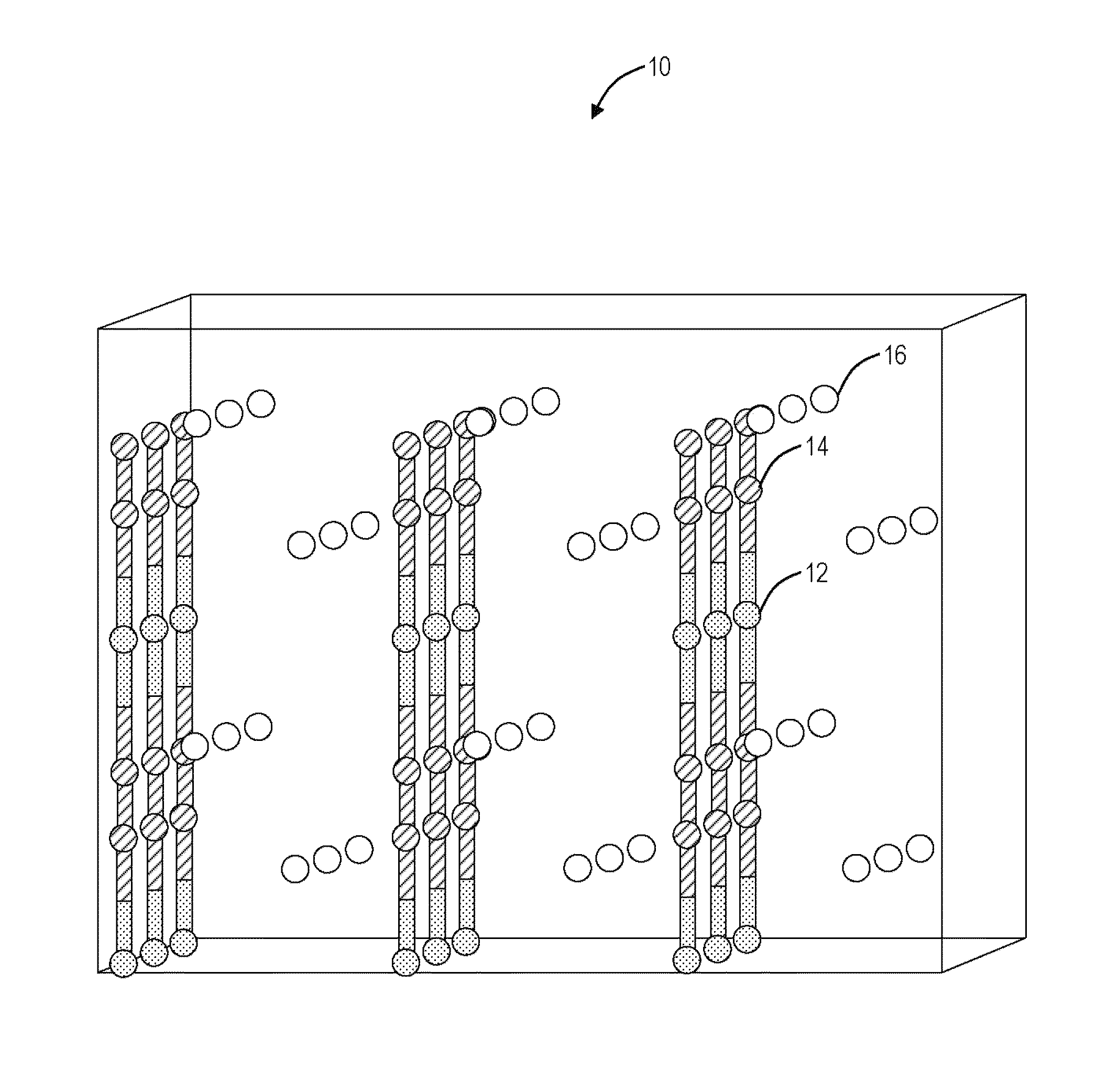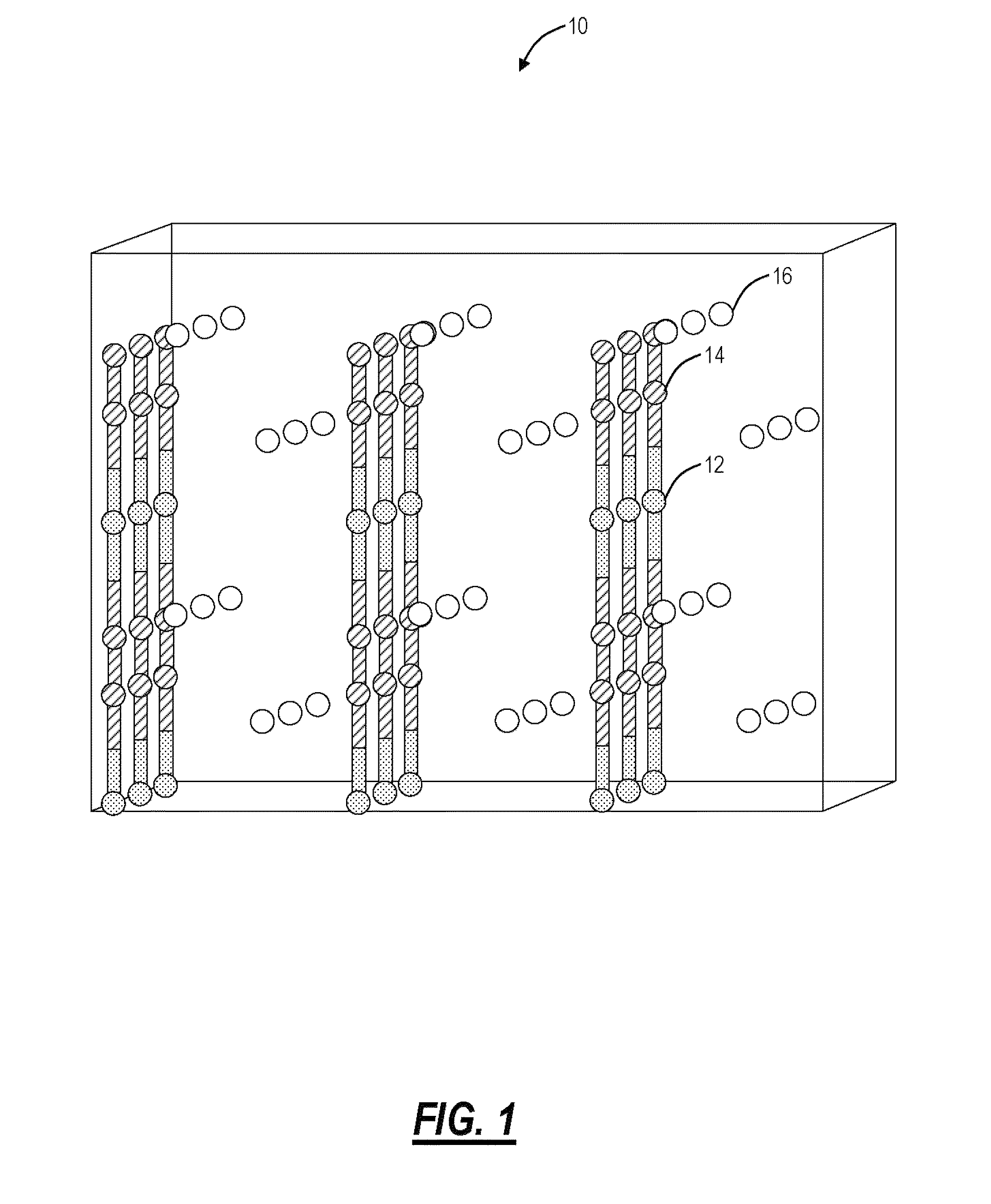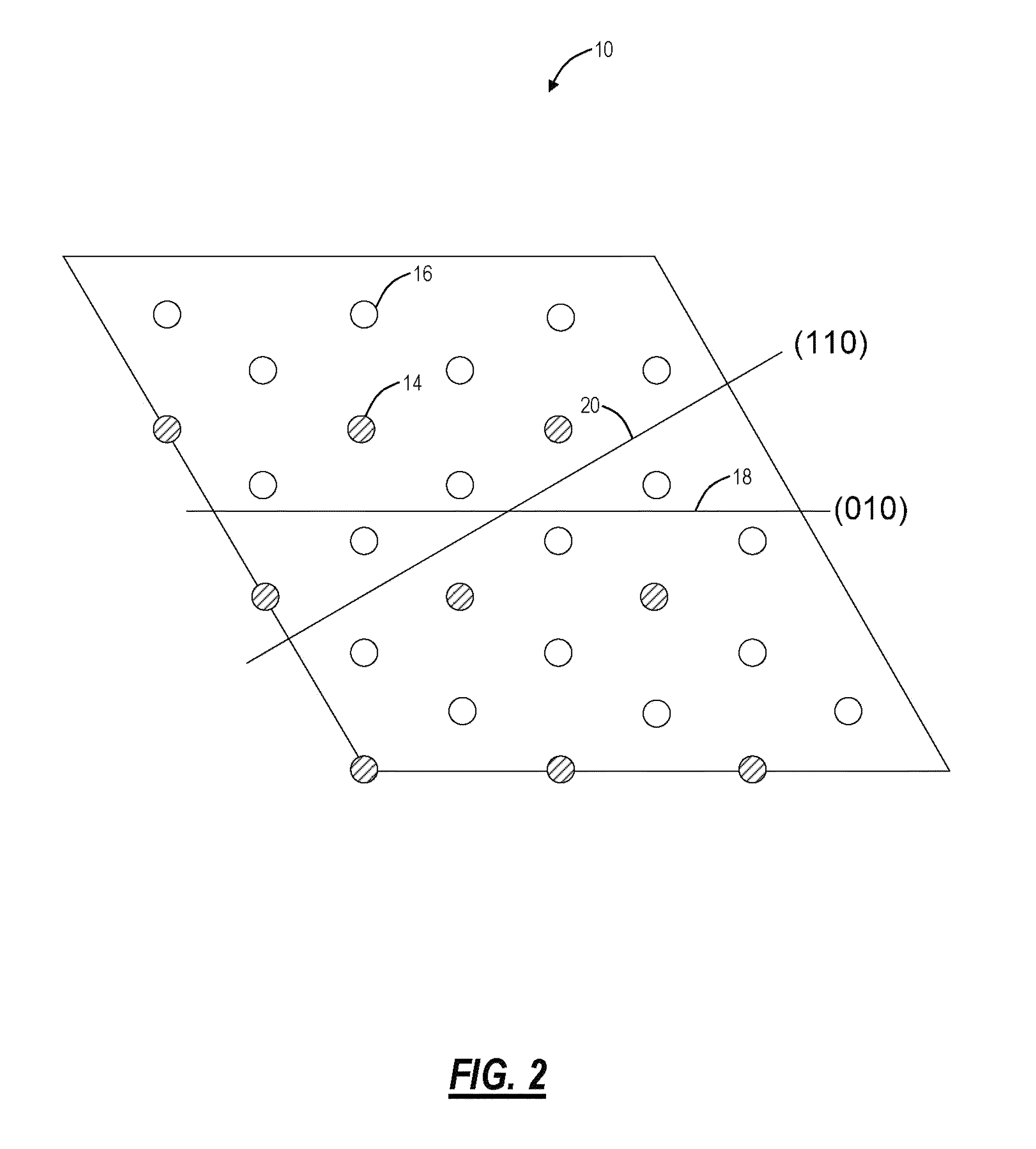Low-workfunction photocathodes based on acetylide compounds
a technology of acetylide compounds and photocathodes, which is applied in the field of low-workfunction photocathodes based on acetylide compounds, can solve the problems of reducing the photo-yield of photocathodes based on multi-alkali antimonides, sub>3/sub>ksb, and relatively short operational li
- Summary
- Abstract
- Description
- Claims
- Application Information
AI Technical Summary
Benefits of technology
Problems solved by technology
Method used
Image
Examples
Embodiment Construction
[0020]In various exemplary embodiments, low-workfunction photocathodes are described for use in a variety of applications including, but not limited to, solar-cells, image-intensifier tubes, photomultipliers, field-emission displays, electron guns, free-electron lasers, and photosensors / detectors. Low workfunction photocathodes are especially useful in night vision devices which magnify or intensify radiation in the visible and infrared spectrum. The low-workfunction photocathodes can magnify and intensify images in infrared light, visible light and ultraviolet light, depending on which crystal cleavage plane surface is being used if the photoemissive material is crystalline.
[0021]In an exemplary embodiment, a low-workfunction photocathode includes an electrode with a photoemissive material coating at least part of the electrode. The photoemissive material includes AnMC2, where A is a first metal element (preferably an alkali metal); n is an integer that is 0, 1, 2, 3 or 4; M is a s...
PUM
 Login to View More
Login to View More Abstract
Description
Claims
Application Information
 Login to View More
Login to View More - R&D
- Intellectual Property
- Life Sciences
- Materials
- Tech Scout
- Unparalleled Data Quality
- Higher Quality Content
- 60% Fewer Hallucinations
Browse by: Latest US Patents, China's latest patents, Technical Efficacy Thesaurus, Application Domain, Technology Topic, Popular Technical Reports.
© 2025 PatSnap. All rights reserved.Legal|Privacy policy|Modern Slavery Act Transparency Statement|Sitemap|About US| Contact US: help@patsnap.com



